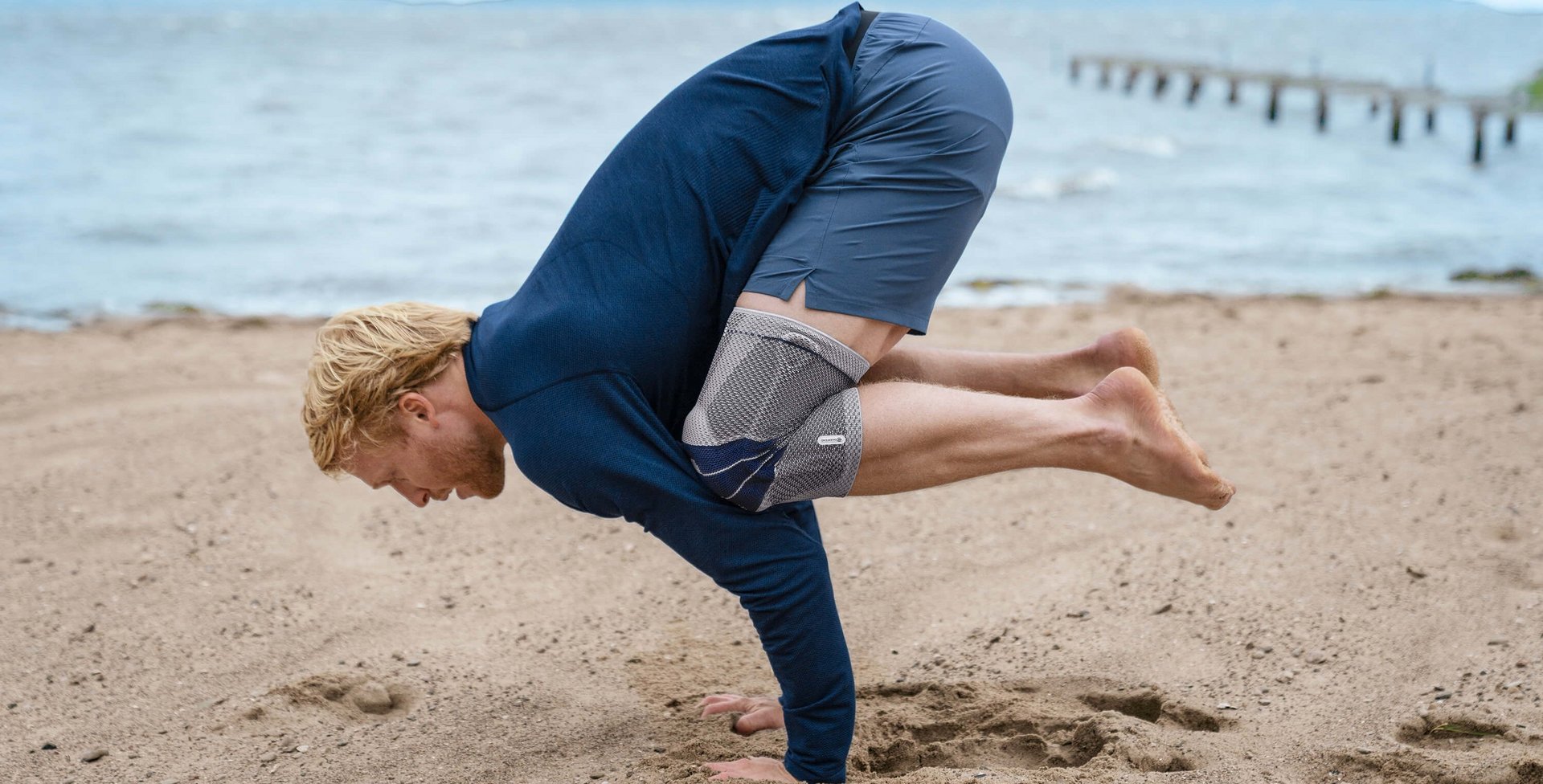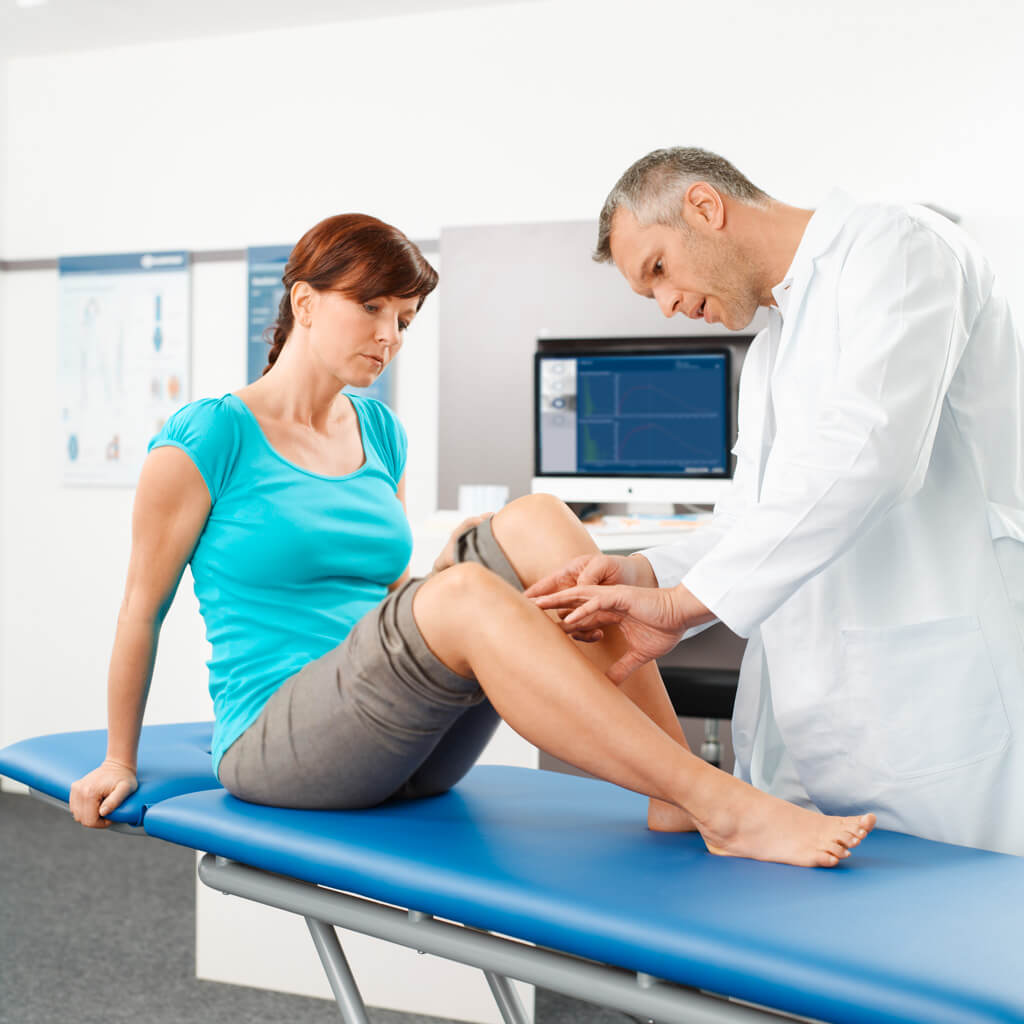
Knee pain
Knee joint instability
When your knee feels unstable
Many of us are familiar with this sensation: the knee feels strangely unstable as if it is about to give way. Sometimes, the knee hurts, especially when taking the stairs. This condition, that may initially surprise those affected, is actually one of the most common joint problems. If the usual stability in the knee seems to have disappeared and the knee feels somewhat wobbly, the likely reason is knee joint instability. In these cases, targeted treatment using relieving supports and orthoses is recommended. They provide increased stability and a more secure sensation when walking.
What happens in cases of knee joint instability?
The knee joint the biggest joint in the human body, and it is also subjected to enormous strain every day. In order to guarantee stability in the knee, it is supported by cruciate and collateral ligaments as well as muscles spanning the joint. In addition, a large capsule surrounds the entire knee. All these structures make up the capsular ligament complex. Damage to this complex, no matter where, will lead to a loss in movement control. The knee will hurt, it will be unstable and may even give out.
Causes for knee instability

Excessively stretched or injured cruciate or collateral ligaments are the cause for knee instability in many cases. While ligament injuries often happen during exercise, congenital or acquired muscle and ligament weaknesses can also make the knee unstable.
A damaged meniscus, too, quickly throws the knee joint off-track. When the knee is healthy, the meniscus ensures that load is transferred safely from the thigh to the lower leg during movement. If the meniscus is damaged, it can no longer properly carry out this task.
If you feel pain when taking the stairs, going down in particular, osteoarthritis of the knee is usually the cause, i.e. wear of the joint cartilage. An inflammation of the bursa, called bursitis, may also be the trigger for your pain.
As you can see, there can be many causes for knee instability. Physicians generally distinguish between three types of knee instability:
- Simple knee joint instability: this is the case when only one of the knee’s structures is affected, for example a medial collateral ligament.
- Complex knee joint instability: in this case, several structures are affected at the same time, for example the cruciate ligaments, collateral ligaments, the knee joint capsule or the menisci.
- Chronic knee joint instability: in this case, the condition has persisted for many years.
But generally, the following applies: the more ligaments are affected by an injury or weakness, the higher the likelihood of knee joint instability.
Typical symptoms: how to recognize knee instability
The saying “Listen to your body” very much applies to the knee, too. At the onset of knee instability, there is usually a vague sensation of insecurity during walking; knee pain often only occurs with excessive strain. Over time, an actual instability and irritation may develop, resulting in the knee giving out. If knee instability is not recognized and treated, this may result in chronic wear of the joint cartilage (osteoarthritis) in the long term – a condition that is no longer reversible.
Diagnosing knee joint instability

If you have the feeling that there is something wrong with your knee, you must make sure you consult a physician, an orthopedist, for example. Using the “drawer test”, the physician will check the function of your cruciate ligaments. During this test, you lie on your back with your knee at an angle of 90 degrees. The physician surrounds the bent knee with both hands and pulls the lower leg forward or pushes it backward. If the lower leg can be shifted toward the thigh more easily than with a healthy knee, the drawer test is deemed as positive. Then there are the varus/valgus stress tests to examine the collateral ligaments. If the knee can be opened up a little when counter-pressure is applied, then this will be a sign of a damaged collateral ligament.
If the diagnosis is knee joint instability, there will usually be additional joint-specific examinations using imaging technology, such as X-ray or magnetic resonance imaging (MRI). The position of the pelvis is also examined, during which the physician will compare leg lengths.
Possible treatments for knee instability
Treatment depends on the severity of the condition. In most cases, knee instability can be treated conservatively, meaning without surgery. If the ligaments are injured, such as in cases of sprained ligaments, the knee primarily needs time to heal and must be relieved. In cases of simple knee instability, physiotherapy and muscle development are usually recommended; stabilizing knee supports can further help the healing process.
If damage to the capsular ligament complex is so severe that the body cannot compensate, surgery may be required.
Supports in cases of knee joint instability – protection and relief
A GenuTrain knee support will help you to avoid subjecting your knee excessive strain during everyday activities and exercise. This may be useful to support conservative treatment, following knee surgery or in cases of chronic knee joint instability. The medical aid stabilizes your knee joint and promotes mobilization – providing your knee joint with secure support and alleviating possible knee pain.

Would you like to know more about our Train supports and their effectiveness? Find out here how the GenuTrain can help you with your knee pain.

Movement starts with a tap
Train whenever and wherever you want!
Our medical aids provide pain relief and stabilization. To support you even further in getting active, we have developed the therapy app. It guides you through personalized exercises to help you get moving. The app also motivates you to improve your mobility and enhance your well-being.